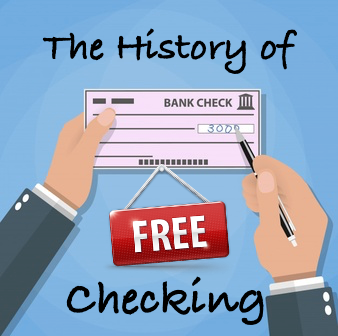The following was written by Tom Litwinowicz
There aren’t a lot of advantages to aging…except, you get to watch the world change from a 30,000-foot view.
As I was coming to my financially aware age, the notion of “Totally Free Checking” swept the nation. You see, at that time, banks charged a monthly fee for checking account services. At that time, consumers and small businesses assembled their stack of bills they got in the mail and sat down at some time during the weekend to write checks. Checks? Well, these were pieces of paper that represented a payment. The check had your financial institution’s name on it, and you filled in the payee and dollar amount, signed it, slipped it into the envelope with the bill, put a stamp on it and sent it in the mail.
According to Mike at freecheckinginformation.com, a direct mail agency came up with the idea of “Totally Free Checking” in 1982. While novel at the time, it has since become ubiquitous. And why not? Checking is the lynchpin to financial services. Not only can the financial institution accessorize to make a lot of money off of “free” checking, but the account servicer also ends up being the primary financial partner of the account owner.
As an analogy, if a bank was a grocery store, a checking account is the bread, meat and milk at the back of the store. To get to it, you have to walk by the chips, soda, spaghetti and candy bars which is where they really make their profits. You see, the person writing the checks came to consider their bank as being their primary financial partner and had the inside track on any other financial needs like a car loan, Christmas club, CDs, Money Markets, Mortgages and more. Ah the good ol’ days!
This is where disintermediation comes in.
Enter credit cards, debit cards, pre-paid cards. Enter American Express and Discover. Enter Best Buy, Delta, United, Walmart and Apple cards. Enter “points”, miles, and cash back. You get it; you live it! Today, instead of writing a check you pull your card. Worse, billers realized they can get their money faster, and cheaper, by billing people directly.
What happens today? People get their bills in their business email, their new Gmail, their burner Gmail account, their old crusty Hotmail along with snail mail and text. What else is happening? Billers want subscribers and not customers. So, we have Netflix, Hulu, Apple+, HBO Max, Discovery+, Spotify, Amazon Prime and hundreds more. Pile on storage options from Apple, Dell, Google, Asus and the rest. A typical checking account holder will have a half dozen cards (or more), with bills coming into a half dozen communication channels, paying for subscriptions they don’t use for providers that don’t even provide an invoice. No wonder people are overwhelmed and skeptical.
It is a problem! Well, it is an opportunity disguised as a problem.
Finovera helps you and your users manage their bills; reestablishing that lost partnership. With Finovera, we provide a Payments eXperience (PX) where the biller’s invoices are centralized and managed. They can be monitored, and the invoices stored with secure out-of-band dual-authentication. The account holder can choose the payment methodology and you can drive positive end-user behaviors. While saving your user money, you can make money. Imagine that, a win-win situation. The user, once again, considers their checking account the lynchpin of their financial partnership who has the inside track to all other financial services.
Let’s make banking a thing again.

